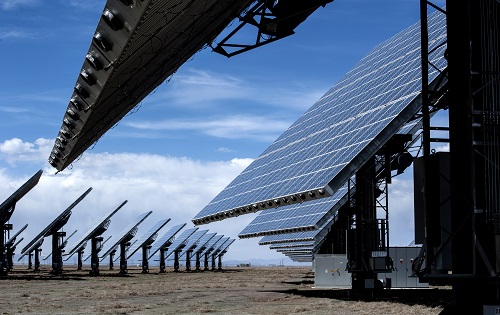
"At Dana, we have a strong commitment to improving the sustainability of our products and increasing our use of renewable energies - but this is more than just another solar project," said James Kamsickas, president and CEO of Dana. "This unique community collaboration allows Dana to capitalize on all the benefits of renewable energy while also making a significant economic impact on the residential neighborhoods surrounding our facility."
Once operational, the solar array will provide renewable energy that will be purchased by Dana for its Toledo Driveline facility, also located in the industrial park.
The Greater Toledo Community Foundation has created a nonprofit entity that will own the solar field in conjunction with the Toledo-Lucas County Port Authority. As the nonprofit generates a revenue stream through the sale of electricity to Dana, proceeds will be reinvested in the surrounding areas through grants to local nonprofits.
Pointing to the unprecedented collaboration among businesses, government and agency partners, Keith Burwell, president of Greater Toledo Community Foundation, said, "The partners' commitment to build a world-class solar-power generation site will provide funds that will be reinvested in the surrounding neighborhoods far into the future. Workforce development, job training, beautification, and other projects in the public interest will benefit from these funds.”
The Toledo-Lucas County Port Authority provided the land within the Overland Industrial Park for the solar array, with industry leaders donating the infrastructure.
Other components of the project have been donated or discounted by various partners, including solar modules from U.S.-headquartered First Solar.; newly-designed inverters by Yaskawa Solectria Solar; and design, engineering and construction services from GEM Energy, JDRM Engineering, Kokosing Construction, the Mannik Smith Group and TTL Associates.
The array, powered by First Solar's American-grown thin film module technology, will generate enough power to reduce the amount of carbon dioxide by more than 3,000 tons - which is the equivalent of removing an estimated 465 cars from the roadways every year. The high-performance, eco-efficient modules have a lower carbon footprint than conventional solar panels manufactured using conventional, energy-intensive processes.
"Renewable energy projects are in the forefront of cutting-edge solutions that meet multiple economic and environmental concerns. In addition, efforts like this, involving numerous partners with significant ties to the community, demonstrate how success can be achieved through broadly-based collaboration,” said Jason Slattery, director of solar for GEM Energy.
The solar arrays are expected to be fully operational by spring of 2020.

